Chapter 2. The Retail Store Customer

Acquiring and keeping customers is paramount in today’s competitive marketplace. It is increasingly important for retailers to retain their most important asset — their existing customers. This is because
customer loyalty is the most cost-effective way to profitably grow a retail business.
The challenge to all retailers is “How can I get my customers to be loyal?”
Building loyalty and retention, cross-selling related goods and services, broadening offerings to fulfil more of customers’ needs are just some ways of adding to the retailer’s profitability.
Some retailers are even going to the creative extremes to gain the attention of customers. Shopping malls feature dolphin pool, skating rink, amusement park rides, etc. In fact, there is even a sporting goods store which has installed a trout pond for customers to try out the fishing equipment before they buy.
With the growing acceptance of online shopping, many retailers and shopping malls are trying to create good reasons for the customers to leave home and shop at their store.
But, wait! Before you think of ways to acquire or retain customers, you must first understand some fundamentals of customers and what makes a customer loyal. Only then can you use such knowledge to help you formulate a better strategy to attract and retain your target customers.
Who is a Customer?
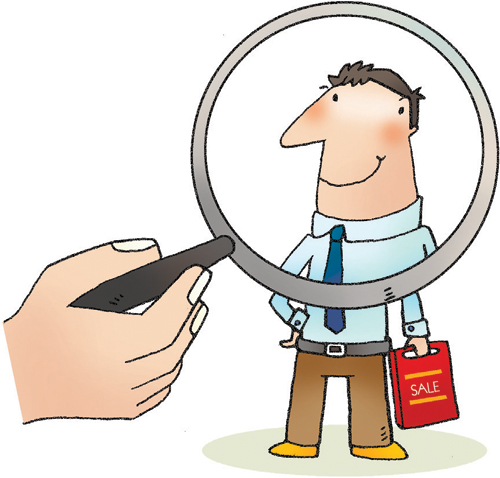
A simple definition of a customer is someone who purchases products or services from a retailer.
Often, in the retail industry, we hear of the phrase — “The Customer is King”. This phrase means that the customer is the most important person in retailing. He buys the goods and services that the retailers have to sell.

A retailer has to meet many kinds of customers.
Types of Customers
As a retailer, you will likely meet three types of customers:
1. Dissatisfied customers who will look for another retailer to provide the product or service.
2. Satisfied customers who will go to the next better retailer if there is one.
3. Loyal customers who will stay with one retailer despite attractive offers by other competitors.
Dissatisfied Customers
This is a very influential group. Many customer survey reports indicate that:
• Dissatisfied customers by word of mouth will tell 8 to 16 others about their bad experience or dissatisfaction.
• With the Internet now, some dissatisfied customers are now telling it to thousands of other people.
• 90% of the dissatisfied customers never purchase goods or services from the the retailer again.
• A prompt effort to solve a dissatisfied customer’s problem or complaint will result in about 80% of them becoming repeat customers.
• It costs two to three times as much to get a customer as it does to keep one.
Quite obviously, a dissatisfied customer will walk away from the retailer and will not want to have any business relationship with the retailer anymore. He may not even bring his concerns to the retailer’s attention. The only reason a dissatisfied customer will continue to do business with the retailer is that they do not have any other choices.
Despite this, it is still important to have a good service recovery process for this influential group of customers. This is because this group of people whose concerns if not addressed will become one of a retailer’s greatest detractors and is unlikely to ever be his customer again.
Satisfied Customers

Satisfied customers can find the same products and services elsewhere.
A satisfied customer is a customer who walks out of the retail shop after buying a product or a service feeling neutral about it. The experience is only satisfactory. It is just a transactional relationship between the retail owner and the customer, that is, the customer exchanges his/her money for the retailer’s product or service. Although it is possible that the satisfied customer will patronise the retail shop again, it is not probable.
The problem with having customers who are merely satisfied is that they can leave the retailer at any time if they can find the product or service cheaper, better or, faster elsewhere or if other retailers offer more benefits to shop with them. In fact, today’s modern customers expect to be satisfied. Thus, just having satisfied customers may not be enough for a retail business to survive in a marketplace characterised by intense competition, broad product assortment, convenient retail locations, and 24-hours shopping anytime, anywhere on the Internet.
The goal of a retail business is to have loyal customers.
Loyal Customers
Loyal customers will not leave a retailer even if they can find another attractive offer elsewhere. At the very minimum, they will give the retailer an opportunity to meet or beat the other better offer. Thus, maintaining loyal customers is a very important part of any retail business.
What is a loyal customer? A loyal customer has the following characteristics:
• A loyal customer is like a friend or a partner. He/She has built a relationship with the retailer.
• A loyal customer will remember the retailer whenever he/she needs to buy something. He/She will buy whatever the retailer is selling and will participate in any event that the retailer is hosting.
• A loyal customer will support the retailer even in a period of crisis.
• A loyal customer is not price sensitive. They will not be attracted by a competitor who offers something cheaper, better or faster. At most, the loyal customer will wait for the retailer to adapt to the competition or offer them other value-for-money products or services.
• A loyal customer will recommend new customers to the retailer. This is a very important characteristic of a loyal customer. He/She will help sell the business by word-of-mouth advertising. If a retailer has a ‘sales force’ of loyal customers, the retail business will be successful.
How do you get loyal customers? One way is to offer products and services that are so good that there is very little chance that the customer requirements will not be met. Emphasise to all employees the benefits of customer loyalty over customer satisfaction and the importance of forming relationships with the customers first, not sales.
Sales will follow relationships.
Of course, one of the difficulties a retailer faces is to understand exactly what the customer wants. Even if the retailer knows the true customer requirements in advance, the customer can and will change them without any prior notice.
Getting loyal customers is a matter of how the retailer treats the customer. What the retailer sells is not going to change, but how the retailer sells it can make a huge difference.
The challenge for the retailer is to be proactive in converting satisfied customers to loyal customers.
Basic Needs of Customers
All customers buy things that they need and things that they want. Needs are the things that people cannot live without, for example, food, water, clothing and shelter. Wants are the things that people would like to have but can live without, for example, jewellery, sport cars, etc.
People need some things but they want many more.
Generally, customers have two types of needs — basic and specific.
Basic needs are personal and very often, these needs are unspoken. Customers will not expect the retailer to meet these needs but if these needs are met, they will feel good about doing business with the retailer.
Specific needs are business-related and very often, these needs are the reason why the customer visits the retailer.
In retailing, specific needs can be met through the merchandise (e.g. product range, price, quality, etc.), the shopping environment (e.g. store ambience, cleanliness, etc.), the service (e.g. quality of service, store opening hours, etc.) and the location.
However, these specific needs can be easily duplicated by other retailers. On the other hand, basic needs are not as easily copied, and they are used to differentiate one retailer from another.
An attractive, welcoming retail environment and a friendly, helpful sales associate are the basic ingredients for making a customer’s shopping experience enjoyable. Outstanding retailers will therefore respond to basic needs first before responding to specific needs.
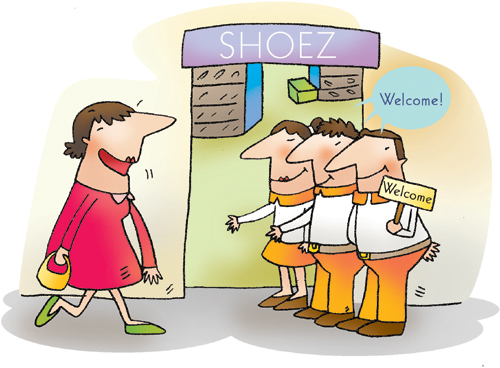
A welcoming shopping environment attends to the specific needs of the customers.
Most of the basic needs are service related. Here are some important basic needs.
Friendliness
The most basic customer need is friendliness. Customers like to be treated politely and courteously. A customer appreciates a warm and genuine greeting which welcomes him/her as a guest to the store.
Information
One way to demonstrate to customers that the retailer appreciates their business is to be able to provide information of its products and services. Most customers can do research over the Internet on product information but they do appreciate such information being made available promptly and accurately by the retailer. The customer will be even more pleased if the retailer is able to provide information on the resources near their store.
Empathy
Showing empathy is to identify with the customer’s feelings. In other words, it is to put yourself emotionally in the place of another. Once the retailer figures out how the customer feels, they show empathy by acknowledging the emotion.
For example, if the situation involves an angry customer, the retailer may say
• “I can see you are really uncomfortable about this.”
• “I can understand why you would be upset.”
Most customers just want to be listened to and be understood. They want the retailers to put themselves in their shoes.
Fairness

Always be fair to your customers!
All customers expect to be treated fairly. Customers get very agitated when they feel they are being discriminated. The retailer needs to make sure that their customers are always treated fairly, for example, first come first served. Treat every customer as a precious individual.
Alternatives
Customers appreciate the retailer’s ability to provide suggestions or alternatives. Customers will be frustrated if they realise that the retailer knows of better alternatives but did not inform them. The retailer should provide solution options that satisfy both the customer’s needs and the policies of the organisation.
Trust
Customers are not concerned about the company’s policies and rules. The retailer should not always use company’s rules and policies as an ‘excuse’ for not being able to meet the customer’s needs. Customers want the retailer to deal with their problems or complaints reasonably. They would appreciate it if the retailer allows their opinion to have some form of impact on the retailer’s decision. To allow customers to have some form of control means the retailer must be willing to support a customer’s request or complaint positively. For example, a retailer who says “Yes, we can try” is much more appreciated than a retailer who says “No, we can’t”. The retailer must trust that the customers will not take advantage of the situation.
Respect
Customers do not like to be questioned. Never doubt the customer. For example, if a customer returns a shirt which shrank after washing and asks for a refund or exchange, always give the customer the benefit of the doubt. Never ask a customer, “Are you sure you followed the washing instructions?” or “Can you describe to me how you washed the shirt?”
Why do Customers Patronise a Retail Store?
Generally, the most commonly cited reasons for the above question are as follows:
• The store location is accessible and convenient
• The sales associates are friendly, helpful and knowledgeable
• A wide variety of merchandise is being offered
• The merchandise is value-for-money
• New merchandise is frequently available
• The merchandise is unique
• The store is clean and organised
• The store has a good reputation
• The store offers easy exchange and refund
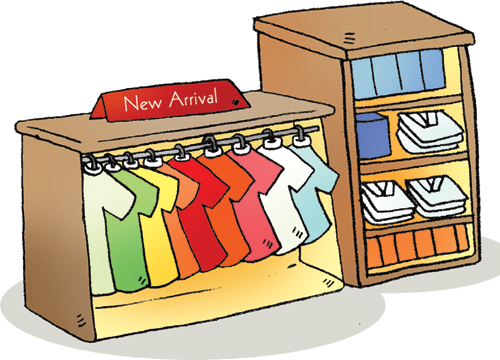
Introducing new merchandise frequently will attract customers.
• The store offers many personalised services with no extra charges
• There are ample parking lots
• There are frequent activities and incentives
From the above list, it is obvious that
the reasons for customer patronage are mainly service-related.
It is pertinent, therefore, to understand the basics of customer service.
What is Customer Service?
This is a very good question that does not seem to have a consistent answer. Customer service is often seen as an activity, a performance measure or a philosophy.
Customer service is any contact between a customer and a company that causes a positive or negative perception by a customer. Customer service can cause customers to be either satisfied or frustrated. Good customer service is a process of providing competitive advantage and adding benefits to maximise the total value to the customer. Thus, good customer service will result in a satisfied customer while poor customer service will cause a customer to be frustrated.
A retail business would not exist without customers. And if there are customers, the retailer needs to have customer service. Everybody talks about the importance of good customer service, but few seem to follow through on it.
Customer service, whether good or bad, exists whenever there is customer contact or a ‘moment of truth’. A moment of truth refers to any interaction between a customer and the retailer that can leave a lasting positive or negative impression on a customer. What a customer remembers about a service is not just dependent on the usual first and last impressions. It is also dependent on the ‘moments of truth’.
In a retail business, there may be 10 or 20 moments of truth in its provision of service. These include product presentation, product packaging, payment, product reservation, complaints, etc.
Thus, understanding the moments of truth that are important to customers is the key to understanding what good customer service is. In other words,
understanding what good customer service is begins with mapping a customer’s experience
and determining the moments of truth of that experience that have an impact on the customer’s perception and memory of the service.
By understanding what the customer requires at each moment of truth, the retailer will be able to develop and execute plans to improve the customer’s perception and memory of the service. Customers are then more likely to be genuinely satisfied and return to buy again.
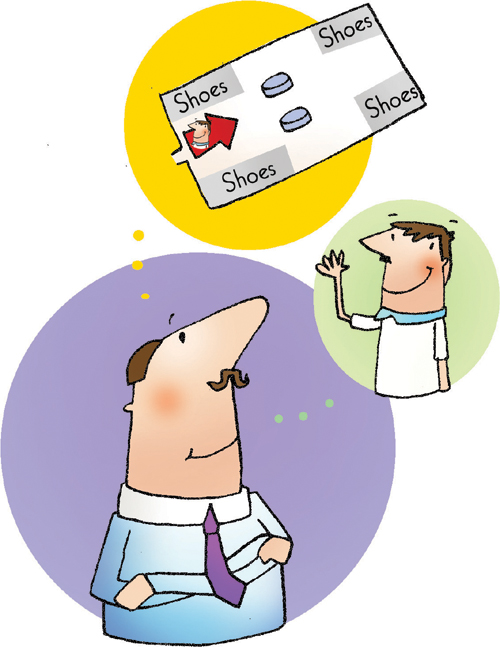
Map your customer’s retail experience!
How to Deliver Good Customer Service
Good customer service can be delivered through the following ways:
Good sales personnel

Good products

Convenience
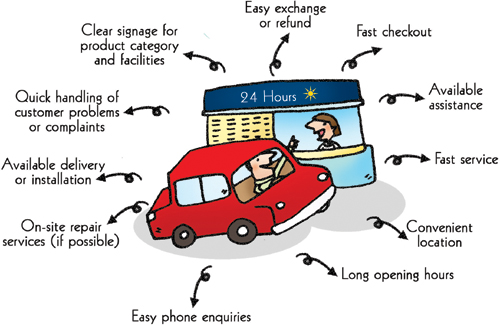
Good shopping environment
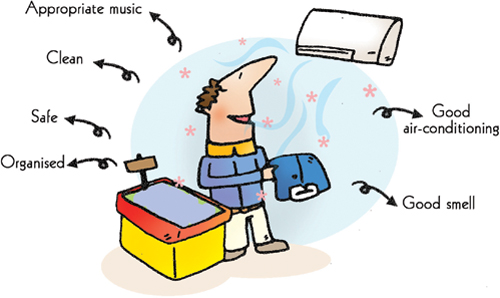
Benefits of Good Customer Service
Providing good customer service will benefit three parties:

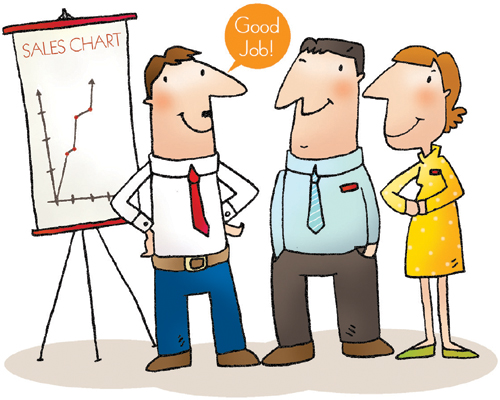
Good customer services will benefit retailers.
Although most retailers are convinced that customer service is a very important component of their business success,
knowing exactly what type of service their customers value most is an ongoing challenge.
The service that a customer values from one retailer may be different from that of another retailer. The use of technology or customer surveys can help to capture information about the customers.
When retailers are able to determine what their customers want, they can focus on improving areas that the customers find real value, thus enhancing the customer experience and the company’s profitability.


